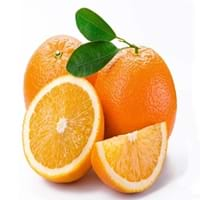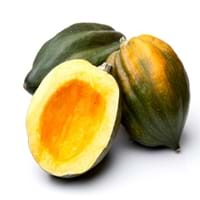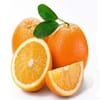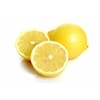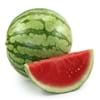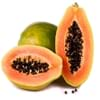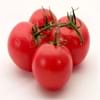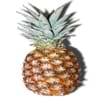Health Benefits
Arthritis treatment, Cancer prevention, Increases metabolic rate, Kidney stone treatment, Lower blood pressure, Prevents constipation, Prevents diabetes, Strengthening of bones, Ulcer treatment, Weight loss properties
Anti-inflammatory properties, Arthritis treatment, Regulates Blood Sugar
General Benefits
Boosts immune system, Controls blood pressure, Digestive aid, Improves eye vision, Maintains healthy cholesterol level
Boosts immune system, Controls blood sugar levels, Digestive aid
Skin Benefits
Anti-aging benefits, Brightens and lightens complexion, Hydrates skin, Skin rejuvenation, Treatment of acne, Treatment of dark spots
Nourishes skin, Protects skin from oxidative stress
Hair Benefits
Good conditioner, Prevents hair loss, Regulates hair growth, Treatment of dandruff
Prevents hair loss, Promotes longer and healthier hair, Regulates hair growth
Allergy Symptoms
Abdominal pains, Breathing difficulty, Coughing, Diarrhea, Drop in blood pressure, Fainting, Runny nose, Skin rash, Sneezing, Swelling of mouth, tongue or lips, Vomiting
Asthma, Red rash, Swelling of mouth, tongue or lips
Side Effects
Abdominal cramps, Diarrhoea, Weight gain
Diarrhoea, Vomiting
Best Time to Eat
As a snack in the late afternoon, Don't consume at night and before bed, Eat the fresh ones, avoid mixing with any other foods, don't eat after meal., Morning time (before lunch), Strictly avoid empty stomach
Along with meal, As a snack in the late afternoon, Don't eat after meal, Eat the fresh ones, avoid mixing with any other foods, don't eat after meal.
Vitamin B5 (Pantothenic Acid)
Vitamin C (Ascorbic Acid)
Vitamin E (Tocopherole)
Not Available
Vitamin K (Phyllochinone)
Not Available
Lutein+Zeaxanthin
Not Available
Calories in Fresh Fruit with Peel
Calories in Fresh Fruit without Peel
Not Available
Varieties
Sweet Orange - Persian orange, Navel orange, Valencia orange and Blood orange. Sour Orange - Seville orange, Bergamot orange, Chinotto orange and Daidai.
Bush Table Queen, Heirloom Table Queen, Festival Hybrid, Early Acorn Hybrid, Table Ace, Ebony and Cream of the Crop
Color
Orange
Dark green, Green-yellow, Orange green
Inside Color
Orange
Yellow
Texture
Succulent
Fibrous
Taste
Sweet-Sour
Sweetish
Origin
South-Eastern Asia
Central America, North America, Unknown
Soil Type
Loam, Sandy loam
Well-drained
Climatic Conditions
Hot
Cold, Sunny
Facts about
- There are around 600 varieties of oranges available worldwide.
- More than 1 plant can grow from a single orange seed.
- Orange and orange blossoms are a symbol of love.
- Orange tree is usually propagated by grafting.
- It was named as Acorn Squash for its resemblance to a large ribbed acorn.
- It is said that squash was being grown in Mexico as long as 10,000 years ago.
- It was the first food cultivated by native American Indians.
Top Producer
Brazil
China
Other Countries
China, Egypt, India, Italy, Mexico, South Africa, Spain, Turkey, United States of America
Egypt, India, Iran, Italy, Mexico, Russia, Turkey, Ukraine, United States of America
Top Importer
Germany
Costa Rica
Top Exporter
Spain
United States of America
Botanical Name
Citrus sinensis
Cucurbita Pepo
Synonym
Citrus aurantium L. var. dulcis
Winter Squash
Subkingdom
Tracheobionta
Tracheobionta
Division
Magnoliophyta
Magnoliophyta
Class
Magnoliopsida
Magnoliopsida
Subclass
Rosidae
Dillenhidae
Order
Sapindales
Cucurbitales
Family
Rutaceae
Cucurbitaceae
Species
C. × sinensis
Pepo
Generic Group
Citrus fruit
Not Available
Difference Between Orange and Acorn squash
We might think that Orange and Acorn squash are similar with respect to nutritional value and health benefits. But the nutrient content of both fruits is different. Orange and Acorn squash Facts such as their taste, shape, color, and size are also distinct. The difference between Orange and Acorn squash is explained here.
The amount of calories in 100 gm of fresh Orange and Acorn squash with peel is 63.00 kcal and 40.00 kcal and the amount of calories without peel is 47.00 kcal and Not Available respectively. Thus, Orange and Acorn squash belong to Low Calorie Fruits and Low Calorie Fruits category.These fruits might or might not differ with respect to their scientific classification. The order of Orange and Acorn squash is Sapindales and Cucurbitales respectively. Orange belongs to Rutaceae family and Acorn squash belongs to Cucurbitaceae family. Orange belongs to Citrus genus of C. × sinensis species and Acorn squash belongs to Cucurbita genus of Pepo species. Beings plants, both fruits belong to Plantae Kingdom.
